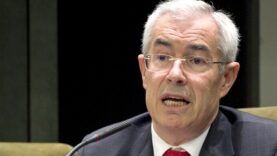The Rafael del Pino Foundation and the Fundación para la Investigación Biomédica del Hospital Gregorio Marañón de Madrid created this project with the aim of disseminating and implementing the protocol for the prevention, diagnosis and treatment of ventilator-associated pneumonia (VAP) in adults.
The research, led by Dr. Emilio Bouza Santiago, Professor of Medical Microbiology, Head of the Department of Clinical Microbiology and Infectious Diseases of the aforementioned hospital, was sponsored by the Rafael del Pino Foundation. Ventilator-associated pneumonia (VAP) is one of the main infectious complications diagnosed in patients admitted to Intensive Care Units (ICUs). Traditionally, this complication has been associated with significant morbidity and mortality, which is why, in recent years, numerous studies have been carried out to better understand its epidemiology, pathophysiology, aetiology and prognostic factors, as well as to evaluate different prophylactic measures and/or therapeutic strategies.
During 2012, all healthcare workers in the Adult Intensive Care Units were assessed for their knowledge of VAPV prevention. An educational programme has been set up online The impact of this programme and its application in real clinical practice has been assessed.
This research has led to a 50% reduction in the incidence of VAP in the Gregorio Marañón Hospital in Madrid, which had 200 episodes of VAP per year with an approximate cost per episode of €20,000. This reduction in incidents has resulted in cost savings of €2,000,000.
Furthermore, given that mortality directly attributable to VAPM ranges between 30 and 40%, it can be concluded that the programme has saved between 30 and 40 lives each year.



